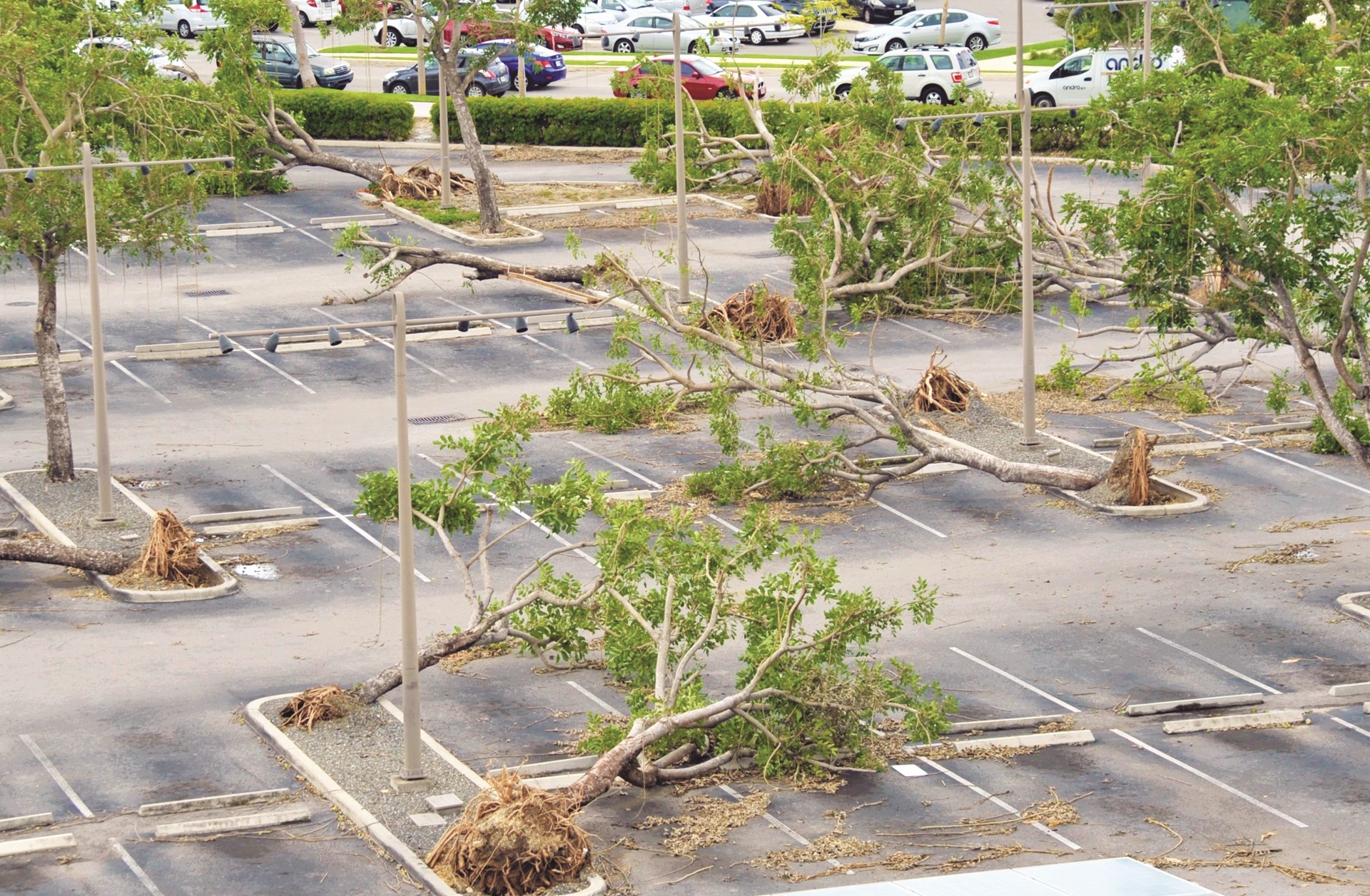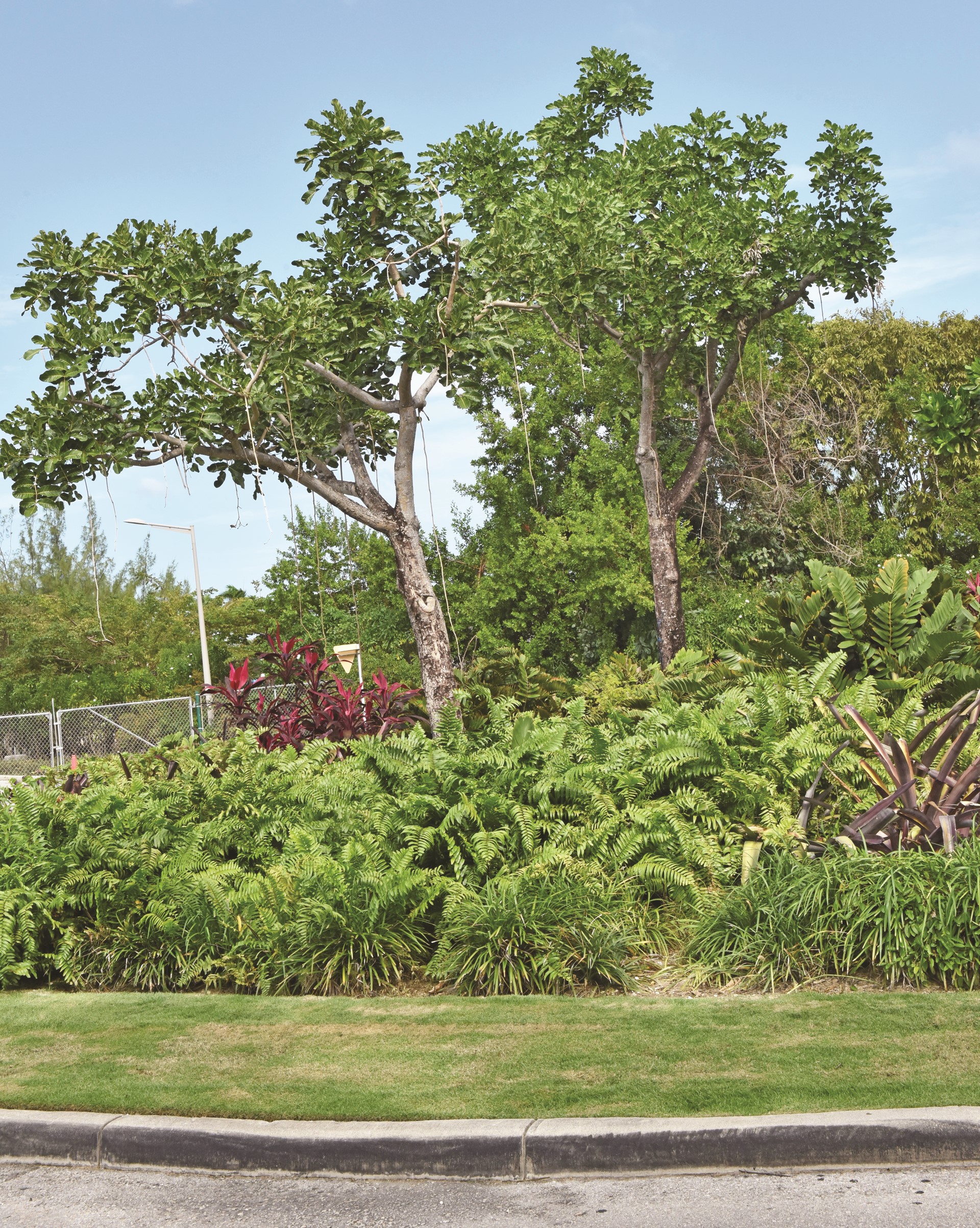

When I close my eyes and think of home in South Africa, a warm wind carries me across the Atlantic Ocean, back to a land where bare feet root into ancient and familiar soil. Blades of tall grass brush and whip the sides of my face and lead me to the dry riverbed — a snake that winds through a great golden plane, flanked by an army of giants — sausage trees.
This tree of many names has held sacred reverence in many African cultures for centuries. Its leafy shade provides a place for indabas, or important meetings, and the leaves, fruit, bark and wood have many mythical, medicinal and practical uses.
Just as they are in Africa, the iconic Kigelia africana, or sausage trees, in the Camana Bay Cinema parking lot are adored and admired by many locals and visitors alike.
In August 2021 many of these trees fell victim to ruthless, near-hurricane-force winds, as Tropical Storm Grace passed by our islands. Of the original 53 trees, 28 were uprooted and badly damaged. Gusts of wind reached such intensity that one tree was snapped off at the base of the trunk and flung 50 yards across the parking lot.

Many resident plant-lovers were concerned as the days passed without the beloved sausage trees being uprighted. Considering the massive damage across the Camana Bay landscape, and the limitations of resources, the landscape recovery team were forced to employ a triage-like approach. Quick decisions had to be made regarding which trees were salvageable and in what specific order, to achieve the best possible outcome.
Understanding the monetary — as well as intangible — value of these trees while simultaneously considering their hardiness, sensitivity to root damage and drought tolerance, and secretly hoping for the best, Dart’s horticulture team decided that these trees would be pruned back significantly and relocated as soon as equipment and staff became available.
Pruning back the crowns to remove most of the leaves forces the trees into dormancy, thus pausing metabolic processes and conserving energy until the tree is replanted. Fungal infections are probable in hot, humid conditions accompanied by heavy rainfall and drenched soils, thus roots and cut sites were treated proactively.
Ten days after the storm, the time had come to relocate the trees. Under ideal circumstances, large trees would be prepared for relocation months or even years in advance. This process involves pruning of roots, reducing canopy volumes and fertilising on a regular basis to minimise the shock to the trees. In this case, we did not have the luxury of foresight. Each tree was individually assessed, limbs and roots were carefully pruned where required, and the trees were lifted using backhoes with special straps onto a purpose-made trailer for transport to their new locations. The team worked carefully to keep the remaining roots and soil intact while loading, unloading and replanting.

Finally, the trees were treated with fungicide and root-stimulating fertilisers and braced to ensure new root growth wasn’t damaged by movement.
Ten large sausage trees were transplanted to the Cayman Parkway, south of the pedestrian underpass linking Cayman International School and the National Gallery. Three trees were relocated to the roundabout on Solaris Avenue in Camana Bay, replacing trees that were lost during the storm, and four trees were replanted in their original positions. The remaining trees were planted in temporary accommodations.
We then secretly crossed our fingers and hoped for the best. Admittedly, after initially assessing the damage to the sausage trees, I wasn’t optimistic that they would survive the damage. Never have I been so happy to be proven wrong! All 27 of the surviving sausage trees are thriving and those replanted in temporary locations will soon find new homes.
Francois Sevenster is a landscape project manager with Dart.
This article was originally featured in the February 2022 print edition of Camana Bay Times.